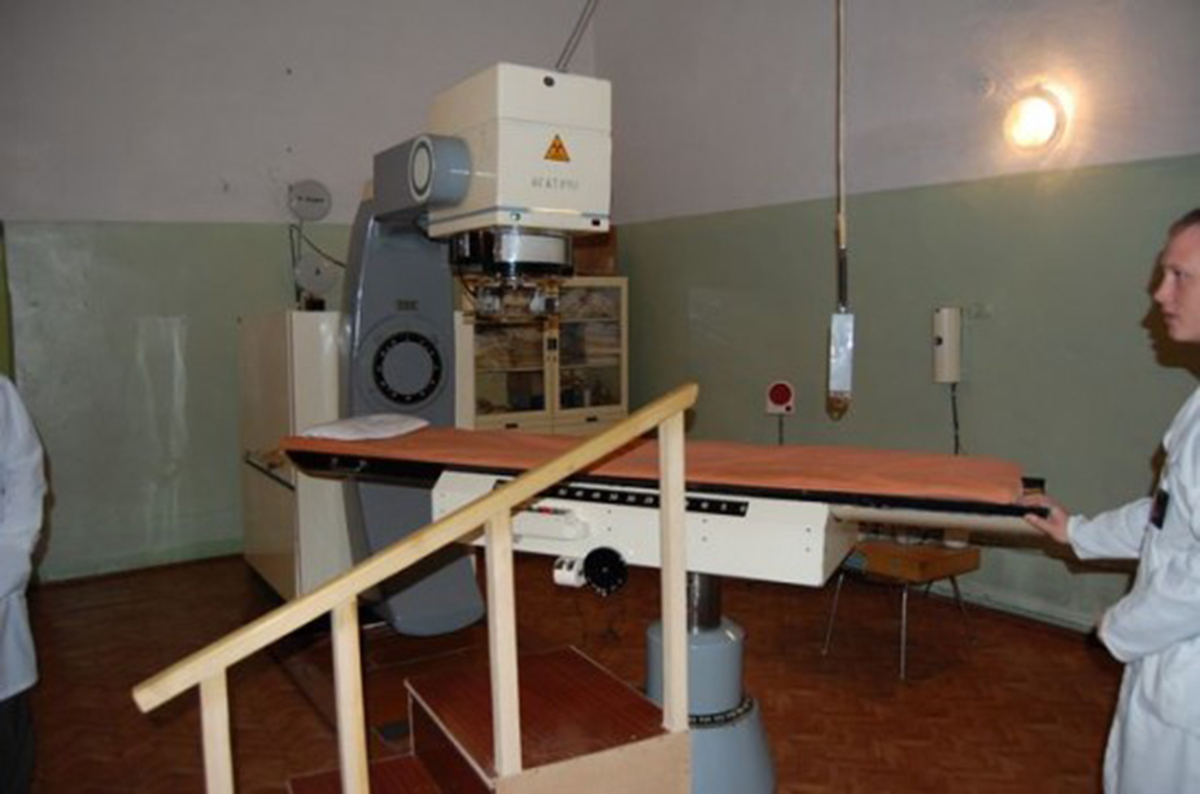Table of Contents
Four types of treatment are used for patients with thyroid cancer; of course the treatment of thyroid cancer depends on the type and stage of the disease, and the patient’s age and the patient's overall health:
- Surgery
- Radiation therapy
- Hormone therapy
- Chemotherapy

Surgery is the most common treatment option for thyroid cancer. The cancer may be removed if using one of the four operations: lobectomy, near-total thyroidectomy, total thyroidectomy, lymph node dissection.
Lobectomy removes only the side of the thyroid where the cancer is found. Usually lymph nodes in the area may be biopsied to see if they contain cancer. Near-total thyroidectomy removes all of the thyroid except for a small part. Total thyroidectomy removes the entire thyroid. Lymph node dissection removes lymph nodes in the neck that contain cancer.
With radiation therapy high dose of x-rays or other high energy rays are used to 'kill' cancer. Most, but not all patients with thyroid cancer need radioactive iodine treatments after their surgery. Two types of radiation therapy are applied: external radiation therapy, where radiation for thyroid cancer may come from a machine outside the body, and internal radiation therapy, where a liquid that contains radioactive iodine is offered to the oatient.
Radiation therapy usually has very positive response with thyroid cancer. Most thyroid cancer cells retain this ability to absorb and concentrate iodine, which provides a perfect chemotherapy strategy. Because the thyroid takes up iodine, the radioactive iodine collects in any thyroid tissue remaining in the body and kills the cancer cells. Since not all other cells of our bodies can absorb toxic iodine, they are unharmed, while as mentioned before thyroid cancer cells, however, will concentrate the poison within themselves. There is usually no pain, nausea or sickness, diarrhea or hair loss after the use of radioactive iodine.
Another form of thyroid cancer treatment is hormone therapy, which is usually applied as pills: hormones are used to stop cancer cells from growing or they are used to stop the body from making other hormones that might make cancer cells grow.
Chemotherapy also uses drugs to kill cancer cells: it may be taken by pill, or it may be put into the body by a needle in the vein or muscle.
Read More: Alternative Treatments for Thyroid Cancer
How does typical thyroid cancer treatment look?
The first step is for a biopsy to be conducted: the doctor sticks a needle into a thyroid nodule (another option is removal of problematic thyroid nodule by a surgeon) and then the nodule or tissue is looked under a microscope by a pathologist who decides whether the nodule is benign, and if it is not, pathologist also decides which type of thyroid cancer it is: papillary, follicular, mixed papilofollicuar, medullary, or anaplastic.
Surgery, appropriate for the type of cancer is done as soon as possible: usually the (entire) thyroid is removed by a surgeon and sometimes also the lymph nodes in the neck too. After the thyroid gland has been removed, which is approximately 4-6 weeks after the removal, the patient undergoes radioactive iodine treatment, which is consisted of taking a single radioactive iodine pill. A few days after the pill patient must avoid contact with other people so they are not exposed to radioactive materials.
Since people cannot live without the thyroid hormone, patient is a week or two after the radioactive iodine treatment put on a thyroid hormone pill. The patient must take one pill per day for the rest of their life.
The patient must then return every 6 – 12 months to his endocrinologist for blood test to determine if the dose of daily thyroid hormone is correct and to make sure that the thyroid tumor is not coming back, but can in many cases continue to live cancer free for the rest of their life.
- www.mayoclinic.com/health/thyroid-cancer/DS00492
- en.wikipedia.org/wiki/Thyroid_cancer
- Photo by shutterstock.com
- Photo courtesy of Sam Blackman by Flickr : www.flickr.com/photos/samblackman/2141260937/

